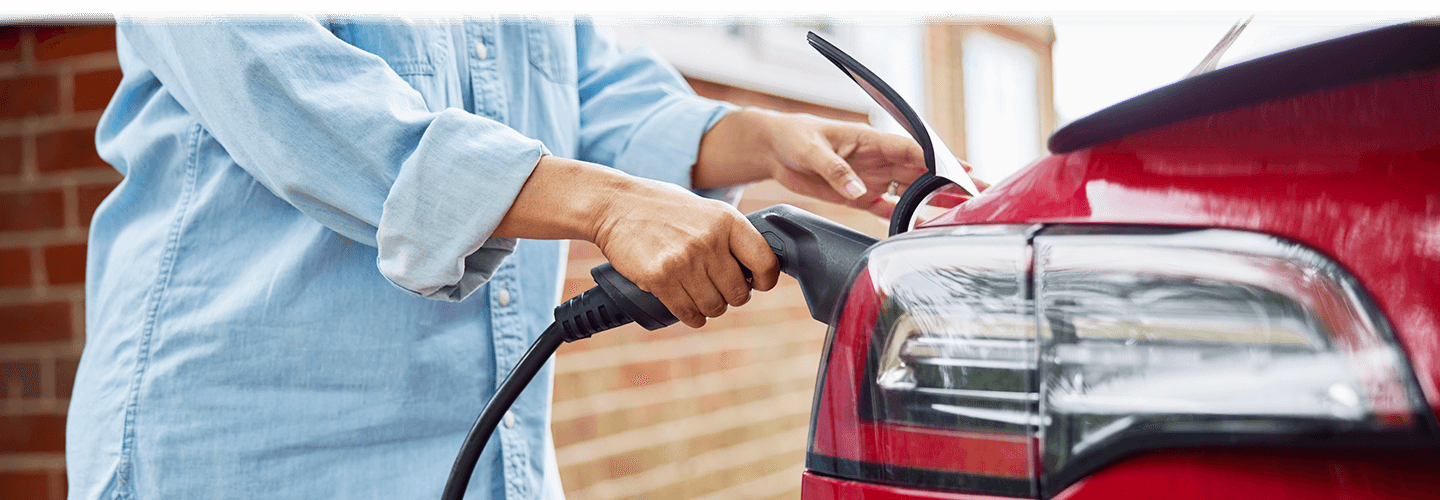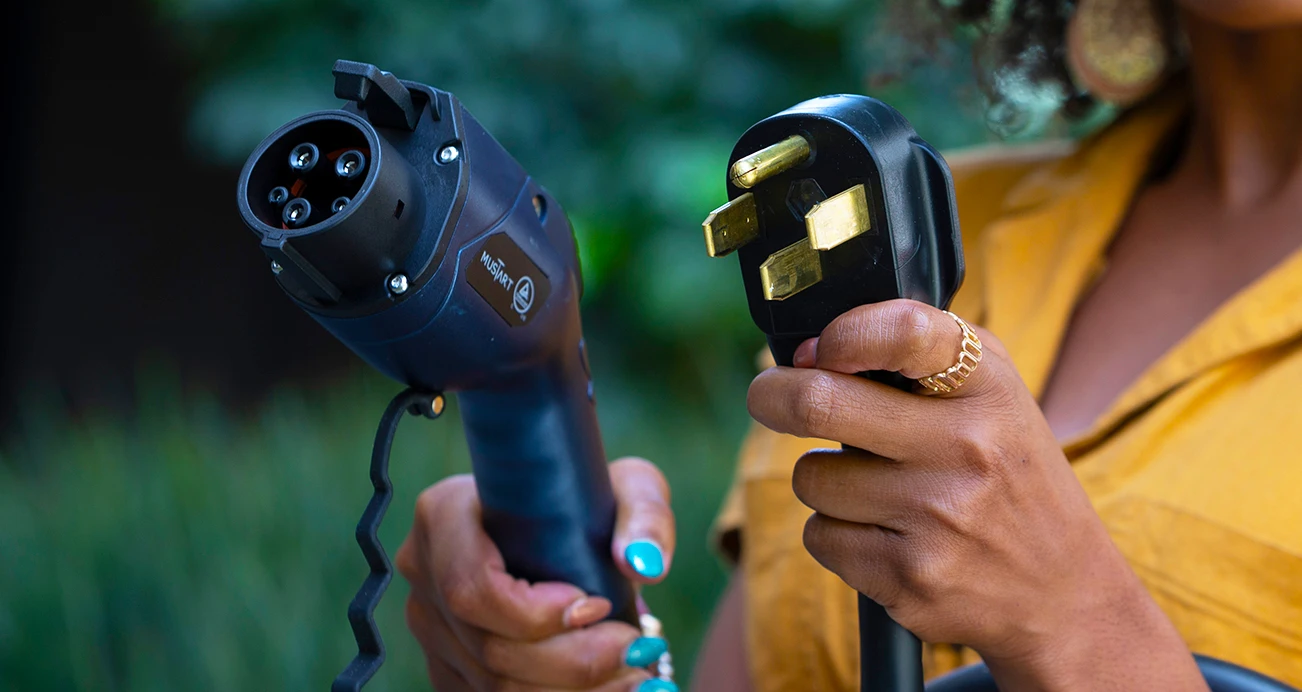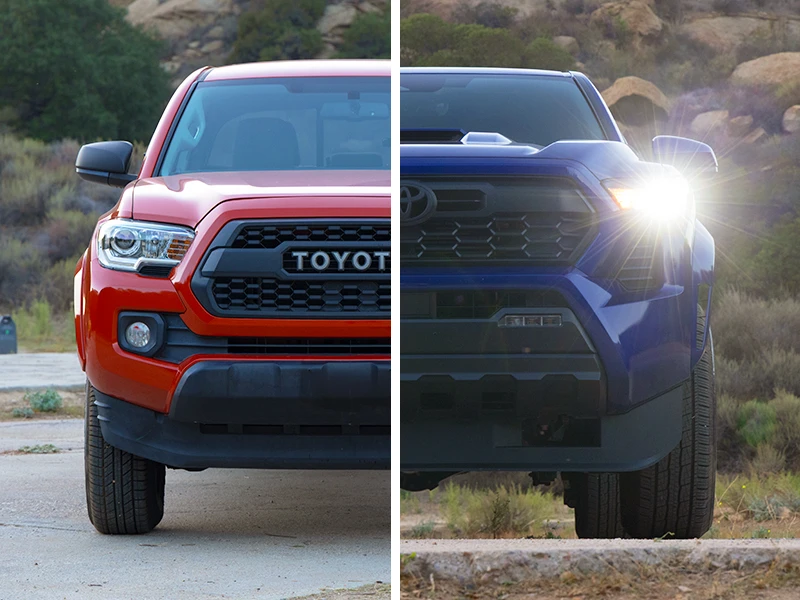
Considering an EV? We take the mystery out of charging.
With thousands of vehicles in our inventory, we’re here to help make car research easier for you. We’ve partnered with car-review experts from Edmunds to weigh in on what matters most when you’re looking to buy a truck or car.
***
An electric car, truck, or SUV can make your life easier by freeing you from the gas pump, but it can make you feel like you need to learn a whole new language to keep it charged and driving. If you’re feeling overwhelmed by EV charging, you’ve come to the right place. Kilowatts, volts, chargers, and levels –– we’ll explain it all so you can shop for an EV with confidence.
What’s a kWh?
Similar to how a gallon is a quantity of gasoline, a kilowatt-hour (usually written as kWh) is a measurement of a quantity of electricity. You’ve probably seen kilowatt-hours mentioned on your electric bill every month. They’re a way to measure the amount of energy used by something, whether that’s a house or a car: One kWh is how much power a 1,000-watt appliance would use in one hour. The average American household uses about 30 kWh per day.
What does kWh mean for EVs? Just like a fuel tank is measured in gallons, an EV’s battery capacity is measured in kWh. More kWh means you can carry more energy with you, just like having a bigger gas tank. Compact commuter EVs can come with batteries as small as 30 kWh, while big electric trucks can have more than 200 kWh of capacity. Bigger batteries usually mean more range, but just like a gas car’s mpg determines how far it can go on a full tank, your EV’s efficiency plays a big role in how many miles you can drive on a charge.
Measuring EV efficiency also uses kWh. But instead of a distance-per-unit measurement like miles per gallon, EVs measure their efficiency in units-per-distance. In this case, it’s how many kWh are used to go 100 miles. This means that, when measuring EV efficiency, smaller numbers are better. For example, a very efficient electric car uses about 25 kWh per 100 miles. On the other hand, watt-guzzlers can require double that amount. Knowing your car’s efficiency is important because you pay for electricity by the kWh (you can learn more about charging efficiency here). Electricity is cheaper than gas, but it isn’t free, and prices can still vary depending on where you live and when you charge.
If you’re trying to figure out how much it would cost to own an electric car, the experts at Edmunds have a handy guide that can help you out.
What are EV charging levels?
There are three charging levels, and each one uses different equipment to charge your EV at different speeds. A simple rule of thumb is that if you want your EV to charge faster, go up a level.
Before we get started, you should know that every EV has a maximum rate of charge it can accept based on how it’s built. That means some EVs have the ability to charge incredibly quickly when plugged into the right charging station, while others won’t be able to take advantage of all the power fast-charging stations can provide. You can look up your car’s maximum charge rate to find out more.
Level 1 charging

Pros
Cheapest and easiest to set up
Doesn’t require installing special equipment
Cons
Very slow
Requires an existing outlet near your vehicle
Level 1 charging uses a regular 120-volt household outlet, like you’d plug your blender into, and a special adapter that usually comes with your car. How fast is Level 1 charging? Not very. It adds just 3 to 5 miles of range for every hour of charging. If your car has a big battery, it could take several days to fully charge. But if your EV has a smaller battery, or you just want to add some range overnight, Level 1 might work for you.
Importantly, never — and we mean never — use an extension cord with a Level 1 charger. Extension cords aren’t designed for the demand of an electric vehicle, and it could create a fire hazard.
Level 2 charging

Pros
Can charge your EV overnight
Option to put your charging station where you need it
Cons
Requires special equipment and professional installation
May not be an option for owners of older houses or renters
Level 2 charging uses the same 220-to-240-volt hookup as an electric dryer or oven. It also requires some specialized equipment that should be installed by a professional electrician. You’ll spend more, but you should be able to charge your EV fully overnight at your house. Not only is that super convenient, but utility companies charge less for “off-peak” use in the middle of the night. How fast is Level 2 charging? It typically adds about 10 to 20 miles of range per hour of charging.
The downside is that if you live in an apartment building, are renting a house, or your house has older wiring, installing Level 2 charging equipment may not be an option.
Level 3 or DC fast charging

Pros
Can charge your EV very quickly
Public stations are often conveniently located in shopping centers or gas stations
Cons
Only available at public charging stations
Charging speeds can vary widely
Level 3 charging is also known as direct current fast charging (or DC fast charging). Fast chargers are blazing fast: Level 3 charging can add up to 60 to 80 miles of range for every 20 minutes of charging time depending on the vehicle and power output of the charging station.
If you want to use fast charging, you’ll need to visit a public charging station. Unfortunately, not all public chargers support fast charging, so your charging speed can vary from station to station. You’ll also need a car that works with DC fast charging. Most EVs built in the last few years can use fast charging, but some electric cars, especially if they’re older, might not be able to charge at Level 3 speeds or may not have a compatible plug.

For instance, Tesla Superchargers are equivalent to DC fast charging, but they are only compatible with Tesla vehicles.
Do I need to install level 2 charging at home?
If you’re going to own an EV, you definitely need access to a charger. But that doesn’t necessarily mean you need to pay to install Level 2 charging at home.
For example, if your commute is less than 30 miles every day, you might be able to live with Level 1 charging. In most cases, Level 1 charging can add at least 30 miles of range overnight.
You can also check into whether there are charging options where you work or if there are public fast-charging stations close by. Some cities have even installed municipal chargers, which could be an option for you.
However, if you don’t have easy access to other charging options, or you have a longer daily commute, you should definitely look into installing Level 2 charging where you live. If you live somewhere with cold or snowy winters, Level 2 charging might be a necessity. Cold weather impacts your battery performance and can shorten the range you get from a charge.
How easy is it to find public charging stations?
A quick search will show you lots of apps and websites dedicated to finding public charging stations. Your car may come with its own app or even with the ability to find nearby charging stations with a built-in navigation system.
As of right now, there are more than 50,000 public charging stations in the U.S., and that number is growing. Between 2020 and 2021, the number of charging stations grew by more than 55 percent, and that growth should only accelerate as more people buy EVs.
Tesla owners benefit from the Supercharger network, which covers most urban areas and many major highway and freeway routes across the country. However, because Tesla uses a special plug for its cars, other EV owners are shut out — at least for now. Tesla started a pilot program in Europe that lets non-Tesla vehicles charge at Supercharger stations, but as of this article's publication, the company hasn’t announced whether it will bring the program to the U.S.
Most public charging stations are currently located in California, Florida, Texas, and New York. No matter where you live, you should look into public charging options in your area, especially if you don’t plan on installing a Level 2 charging station at home.
As of right now, only 16 percent of public charging stations in the U.S. are DC fast charging. Even if there are stations in your area, you may need to plan on spending a little more time plugged in.
But with current investments, public and private, in building more charging stations, it’s likely that you’ll have more charging options in the next few years no matter where you live.
Next steps
Still trying to decide whether an electric car is right for you? Check out 5 tips for deciding if you should buy an EV, as well as our handy guide on EV maintenance costs.
If you’re ready to take the plunge and looking for help choosing an EV, we’ve got you covered with the 10 best electric cars you can buy right now.




